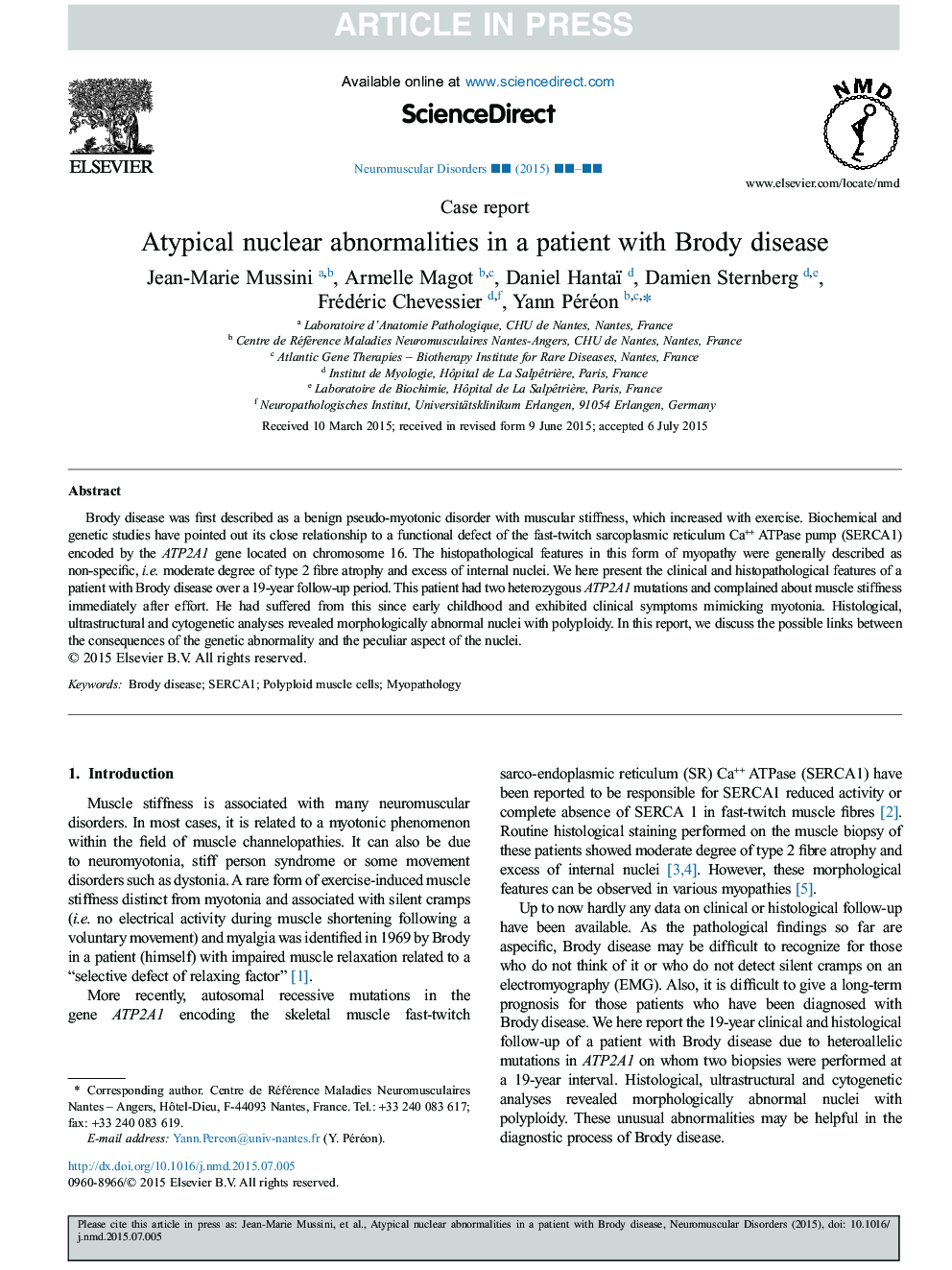| Article ID | Journal | Published Year | Pages | File Type |
|---|---|---|---|---|
| 6041121 | Neuromuscular Disorders | 2015 | 7 Pages |
Abstract
Brody disease was first described as a benign pseudo-myotonic disorder with muscular stiffness, which increased with exercise. Biochemical and genetic studies have pointed out its close relationship to a functional defect of the fast-twitch sarcoplasmic reticulum Ca++ ATPase pump (SERCA1) encoded by the ATP2A1 gene located on chromosome 16. The histopathological features in this form of myopathy were generally described as non-specific, i.e. moderate degree of type 2 fibre atrophy and excess of internal nuclei. We here present the clinical and histopathological features of a patient with Brody disease over a 19-year follow-up period. This patient had two heterozygous ATP2A1 mutations and complained about muscle stiffness immediately after effort. He had suffered from this since early childhood and exhibited clinical symptoms mimicking myotonia. Histological, ultrastructural and cytogenetic analyses revealed morphologically abnormal nuclei with polyploidy. In this report, we discuss the possible links between the consequences of the genetic abnormality and the peculiar aspect of the nuclei.
Keywords
Related Topics
Life Sciences
Neuroscience
Developmental Neuroscience
Authors
Jean-Marie Mussini, Armelle Magot, Daniel Hantaï, Damien Sternberg, Frédéric Chevessier, Yann Péréon,
